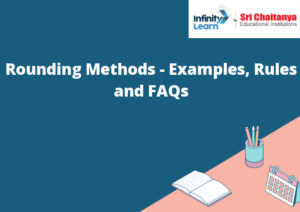Table of Contents
Math Rounding
Math rounding is a technique used to simplify numbers. It is a process of rounding a number to a certain place value. The number is rounded up or down to the nearest number that is a multiple of the place value. For example, if a number is rounded to the nearest hundred, the number would be rounded up to the nearest hundred if it is a number such as 123, and it would be rounded down to the nearest hundred if it is a number such as 124.

Examples of Rounding Up Math
There are a few different ways to round up math, but they all follow the same basic principle: You take the number you’re rounding, and add one to it. Then, you find the nearest number that’s evenly divisible by the number you added. That’s the number you round up to.
For example, let’s say you’re rounding up the number 5.5. You would add 1 to 5.5, which equals 6.5. Then, you would find the nearest number that’s evenly divisible by 6. That number is 6, so the number you’d round up to is 6.
Examples of How to Round Numbers
There are a few different ways to round numbers, but they all follow the same basic principle: you look at the number to be rounded, and then decide which number to round it to.
For example, if you want to round the number 9.5 to the nearest whole number, you would round it up to 10. If you want to round the number 9.5 to the nearest tenth, you would round it down to 9.4.
Here are a few more examples:
-To round a number to the nearest whole number, simply round up if the number is 5 or above, and round down if the number is below 5. For example, the number 7.5 would round up to 8, and the number 2.5 would round down to 2.
-To round a number to the nearest tenth, round up if the number is 5 or above, and round down if the number is below 5. For example, the number 7.6 would round up to 8, and the number 2.3 would round down to 2.
-To round a number to the nearest hundredth, round up if the number is 5 or above, and round down if the number is below 5. For example, the number 7.699 would round up to 7.70, and the number 2.342 would round down to 2.34.
Rounding and Adjusting Method of Exact Numbers
The rounding and adjusting method of exact numbers is a technique used to calculate the exact value of a number by adjusting it until it is a whole number. This method is used when the exact value of a number is required, for example in scientific or mathematical calculations.
The rounding and adjusting method of exact numbers is as follows:
1. Start by rounding the number to the nearest whole number.
2. If the number is even, adjust it down by one unit. If the number is odd, adjust it up by one unit.
3. Repeat steps 1 and 2 until the number is a whole number.
4. The final result is the exact value of the number.
Scientific Rounding
When rounding a number to a specific place value, you always round up if the number is 5 or above and round down if the number is 4 or below.
Rules for Rounding-Off
Numbers
There are general rules for rounding-off numbers. The most important rule is to use common sense. In general, the rule is to round-off numbers to the nearest number that is easier to work with.
For example, if you are rounding-off the number 5.6 to the nearest number, you would round it off to 6. If you are rounding-off the number 5.5 to the nearest number, you would round it off to 5.
ASTM E29 Rounding
, clipping, and truncating numbers
This standard provides guidance on rounding, clipping, and truncating numbers.
Leading Digit Approximation
The leading digit approximation is a technique used to estimate the value of a number. This technique is used to estimate the value of a number by rounding the number to the nearest integer. The leading digit approximation is used to estimate the value of a number by rounding the number to the nearest tenth.
on Math Rounding
Round the following numbers to the nearest whole number.
5.5
6
7.5
8
5.5
=6
6=6
7.5=8
8=8








